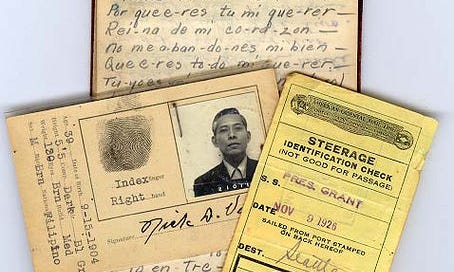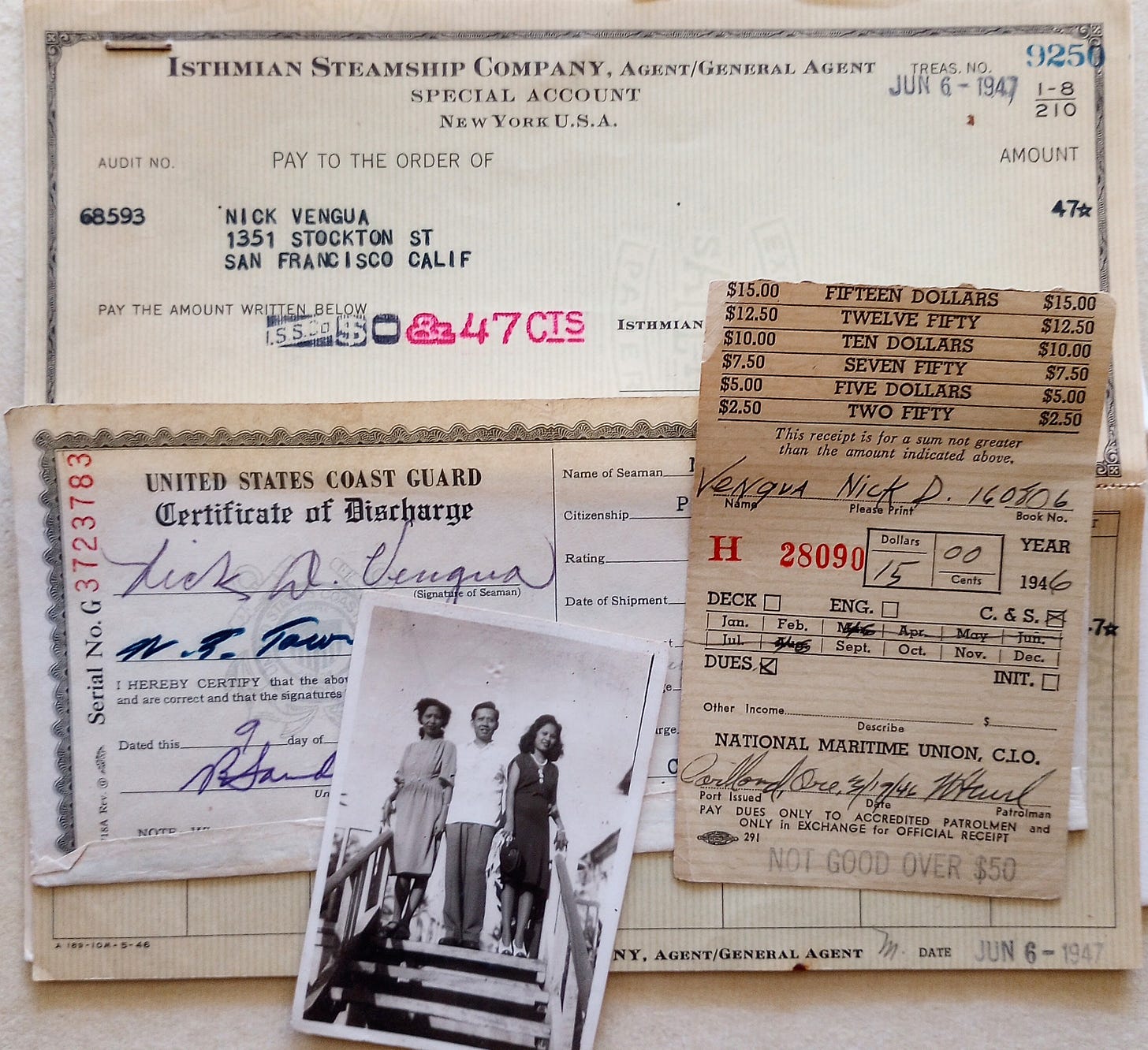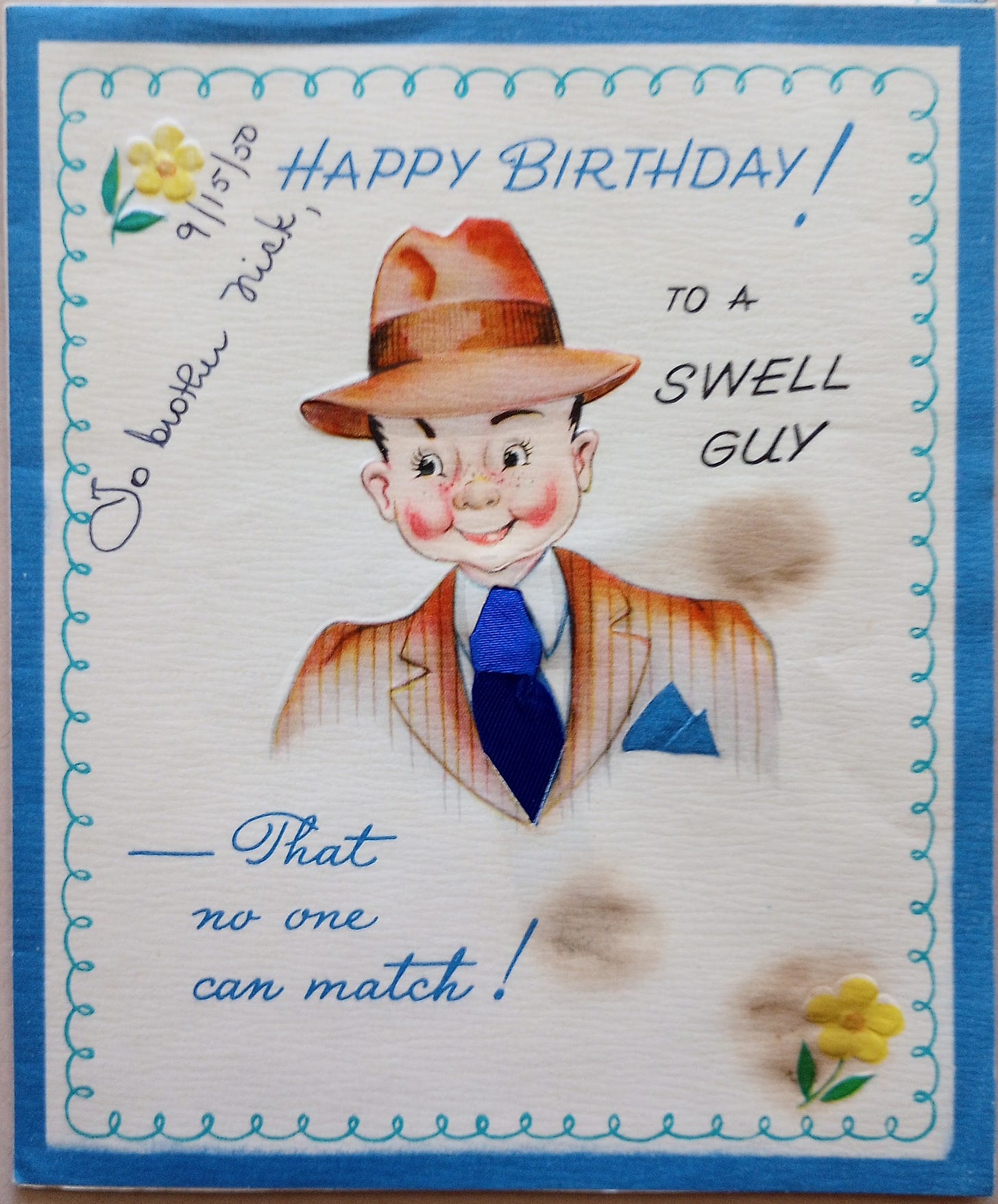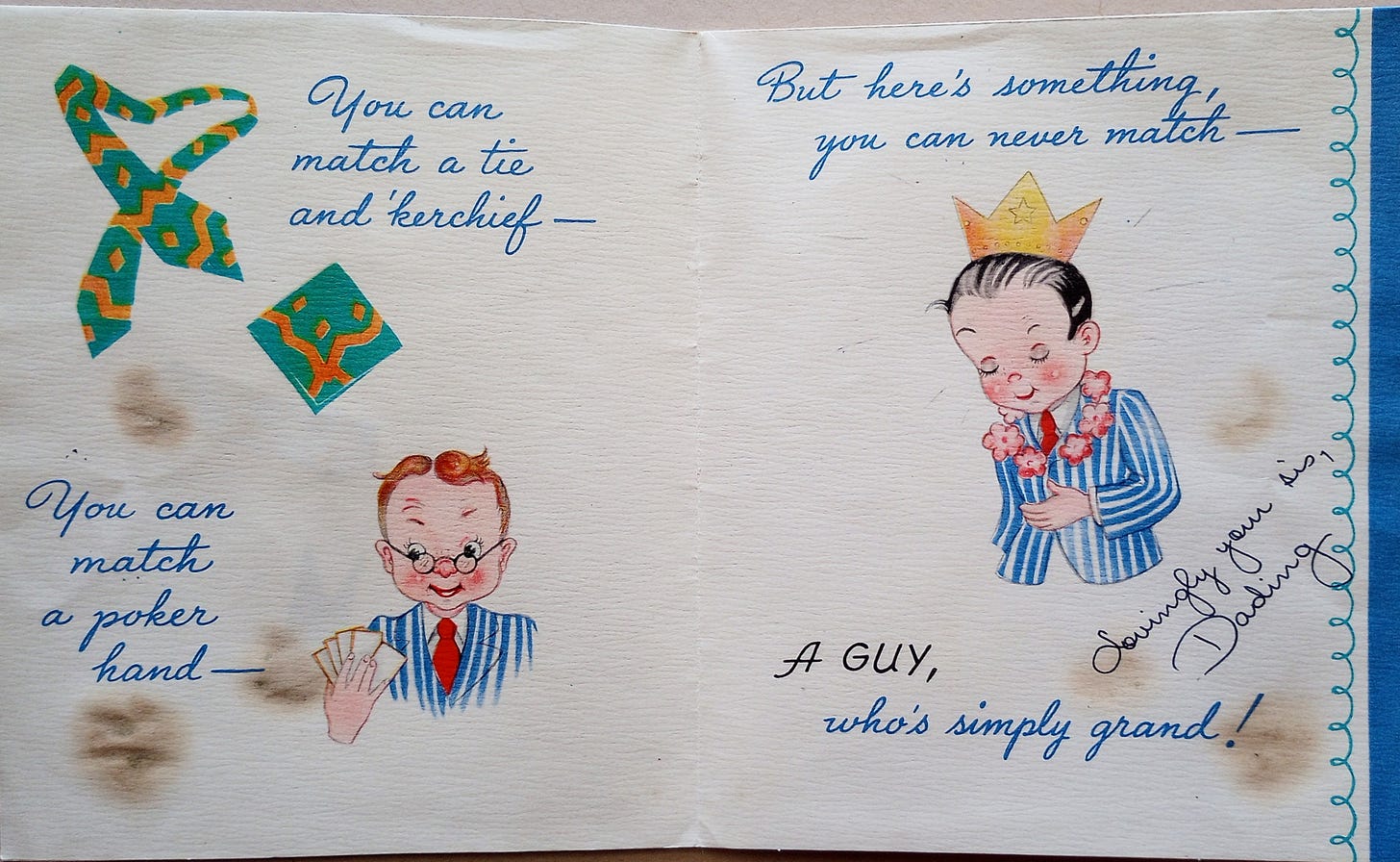You've Got Mail Art
#165: Ephemera, Mail Art and IUOMA, Mailart.pt, Stefanie Syjuco, LindaLay, Mimosa Shah, Art Prof w/Chuck and Lauryn Welch, Calum, Alvaro Barrington, Ella Fitzgerald, and Pepe Marquez.
THEN & NOW
For readers who have read “Manila Mon Amour” and “Romance Among the Ruins,” you might be thinking of my soon-to-be parents as a youthful couple in the midst of young love. Well, Dad was forty-one, and Mom was thirty-four; she immigrated to the U.S. when she was thirty-eight. I was born near the end of her child-bearing days.
Mom had lived through the destruction of Manila during WWII, had seen dead bodies on the city streets. Dad had been a farm laborer and cannery worker in the U.S. for over a decade. He’d experienced Depression-era racism and joined unions and strikes—including supporting the 1934 West Coast dockworkers’ strike— before applying for his first job on a hospital ship—which would take him to Pearl Harbor to pick up the wounded right after the first attack.
Here are some Depression-era and early post-war ephemera from my father’s belongings. Excepting the song lyrics and the photograph of Dad in Manila standing between Mom (left) and his sister-in-law (right), what strikes me about most of the documents he left is that they were all about work—certifications to work, to be paid, to retire, to join unions, and to pay taxes—and he kept all of those documents.
Yet, Dad had a creative side, too. Before he came to the U.S. to work, he had been an apprentice at a graphic artist’s studio. And he was an avid musican and guitar-player. He gifted me with my first set of oil paints and easel when I was eight, and it wasn’t a kid’s set, either—I felt like he expected me to do something with it, immediately! Accordingly, I looked through the “American Art” section of my encyclopedia, and started copying paintings I found there.
Back to my parents’ letters for a minute: Aside from letters and RadioGrams, the collection includes holiday greeting cards and postcards. I’ve noticed that they usually contain very little writing. The cards are tokens to the receiver—almost like a tweet—brief acknowledgment of a relationship via a card that some stranger designed. Some of the cards had a photograph slipped into the envelope. Some of them were cutesy, like the one below to my dad from his sister-in-law:
The 1950s was a strange era. Perhaps the artist was trying to capture the innocence of a youthful “past,” but couldn’t quite manage it.
ART
I’m still on a mail art (also known as postal art) kick.
Since I began using the internet, my exposure to email and social media has contributed to my alienation from the one-on-one communication of postal mail. I opt instead for clicking the keys on my computer to send out messages instead of paper mail. And what has that gotten me? It connects me to people, and that’s not bad (usually). But it’s also given me a case of carpal tunnel in my “mouse” hand/wrist/arm, and worse—I can tell that my constant jumping from one site to another has degraded my ability to focus. So I thought it might be interesting to try mail art as a different and fun mode of creativity and communication.
I even applied for membership in IUOMA, the International Union of Mail-Artists,1 and was accepted just this afternoon. I feel like a kid who gets to join the treehouse club! Let’s see what happens. I’ll report on the results here.
For a deeper look at what mail art is, and what it’s like to be a mail artist, see the Art Prof’s discussion with Chuck and Lauryn Welch in the Rabbit Hole (next section).
RABBIT HOLE
Interested in submitting your mail art for a show? Here are some international calls for artists in the online mail art site: Mailart.pt. Twenty days left to submit to the “Rediscovering Kindness” show at the Martellago Library in Venezia! Seventy-nine days to the “Free Palestine” exhibit in Greece! Warning: you likely won’t get submitted mail art back—but then, that’s sort of the point. Be sure to check the instructions and return policies.
Stefanie Syjuco’s archival art projects are an inspiration for my letter project, reminding me that any Filipino American archival collection must necessarily be, as she notes, “a necessary antidote to the colonial archive, a site of Filipino American history intertwined with American history across generations.”
Artist LindaLay had a good art summer! Check out her fiber arts “Love Life and Laughter” installation and her experiences at the local West End Celebration 2024:
“Wish You Were Here: The Power of Postcards,” an article by Mimosa Shah for Art Institute Chicago.
The Art Prof (Clara Lieu) with Chuck Welch and Lauryn Welch discussing Mail Art. This is a thoroughly fun talk to listen to:
Calum is an artist, vanlifer, and researcher with a fascination for strange vehicles. And he likes to explore using Google maps. In the process, Calum found a number of mysterious arrows that inspired him to make this video, “The Abandoned Airways: How Airmail Transformed America.” By the way, this is seriously nerd-level stuff. The guy does his research!
Black Caribbean artist Alvaro Barrington on how family and public life intertwine with his art: “This is What Grace Is”:
SOUNDINGS
Ella Fitzgerald at the top of her form scatting “Air Mail Special”2 in 1961 (on Bob Zwolinski’s YouTube channel):
Pepe Marquez sings “Be Thankful for What You’ve Got,”3 by William DeVaughan (La Cima Music channel):
Big thanks to all of you who read Eulipion Outpost regularly, and to those who have subscribed here or donated on my Ko-fi page to support my efforts.
My ongoing appreciation goes to the Mysterious M. for his editing.
Website and blog: Jeanvengua1.wordpress.com
Links List on a just-for-fun, old-school Neocities site that I built.
Eulipion Outpost is a reader-supported publication. To receive new posts and support my work, consider becoming a free or paid subscriber.
Int’l. Union members use the hyphen, but I don’t see hyphens being used in other references to mail art. So, unless I’m referring to IUOMA, I won’t be using it.
"Air Mail Special" is a 1941 jazz standard written by Benny Goodman, James Mundy and Charlie Christian.
Directed by: Pepe Marquez & Carlos Guillen with Gabriella Guillen for LA CIMA MUSICalong with Cj Infinito & Carlos Alvarez Aragon for CJ Infinito Productions. #lacimamusicSong written by: William DeVaughn under licensing through The Harry Fox Agency (HFA)Song Arranged by: Pepe Marquez, Produced by Jeff LewisFeaturing: Jeff Lewis on Trumpet - Dora Sanchez on Vocals & Lorenzo Martinez on Percussion.Album available on, Spotify, cdbaby, Amazon Music and all digital download sites.










This is so interesting. My mother was there from start to finish. She was born and lived near where the imperial Japanese forces first landed in northern Luzon on December 8, 1941. She was twenty-two. The only thing I recalled her saying was that everyone had to bow their heads whenever a Japanese officer walked by. I know she left for the U.S. on July 3, 1946, one day before the U.S. declared Philippine liberation. But she never talked about what happened or what she saw during those four and a half years other than that one brother died of typhoid and another was able to escape the Bataan death march. Who knows if I'll ever know?
Thanks for sharing! 🥰